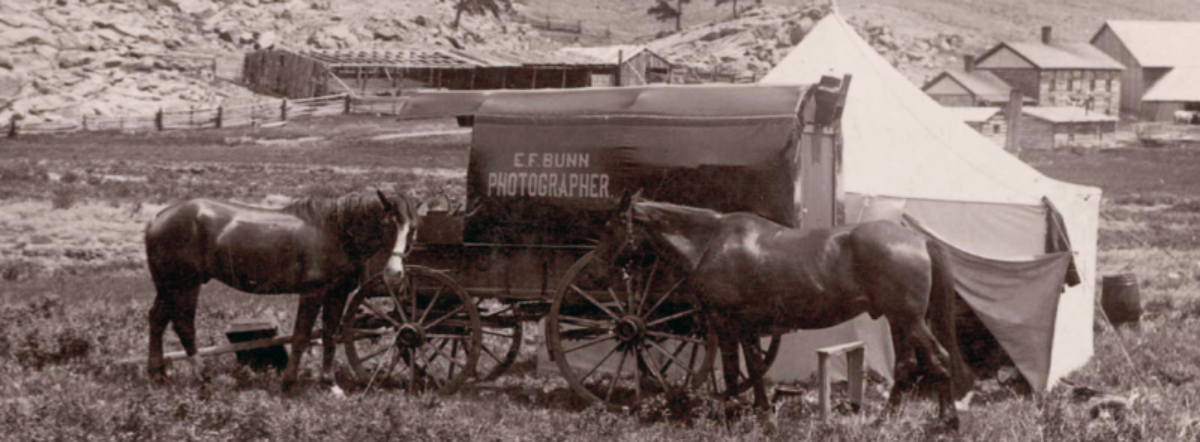B. H. Gurnsey produced hundreds of stereoviews of Colorado during the 1870s. His series, Gurnsey’s Rocky Mountain Views and Scenes on the Line of the Denver & Rio Grande Railway, include images of Canon City, Colorado Springs, Leadville, Manitou, Pike’s Peak, and the Grand Canon of the Arkansas. Numerous prominent institutions, including the George Eastman Museum, Amon Carter Museum of American Art, The J. Paul Getty Museum and the New York Public Library, collect and preserve Gurnsey’s work.

Byron Hamilton Gurnsey was born on October 12, 1833, in Chautauqua County, New York, to John M. Gurnsey and Susan Nevins Gurnsey. He married Delilah Ida Simpson on December 9, 1858, in Battle Creek, Michigan. B. H. Gurnsey served four years and nine months in the Civil War, first with the 41st Iowa Infantry, Company C, stationed at Fort Randall, Dakota Territory, and later in the 7th Iowa Cavalry.

After the war, Gurnsey operated a photographic studio at the corner of Front and Pearl Streets on Sioux City, Iowa’s levee. He offered “Photographs and Ambrotypes.” His stock included stereoscopic views and stereoscopes from an eastern supplier. In 1870 he partnered with William H. Illingworth, as Gurnsey & Illingworth. On June 5, 1871 a fire completely destroyed his workplace. Even though he opened new photographic rooms over the Imperial Bakery, Gurnsey decided to leave Iowa City. In December 1871 he relocated to Colorado.
Gurnsey opened the first photographic studio in Colorado Springs, with a second studio in Pueblo, Colorado. In Pueblo, he worked above the St. James restaurant, until he completed a new studio on Main Street, which he operated until 1875. He partnered with Eugene Brandt at this location.

As his success grew, Gurnsey completed a new brick building in Colorado Springs on Pike’s Peak Avenue in May 1874. The following year he sold an impressive $4,000 worth of stereoviews. In addition, his photographs received national attention when they were published in the July 4, 1874 issue of Frank Leslie’s Illustrated Newspaper. This weekly news magazine, with a subscriber base numbering in the tens of thousands, published four wood engravings from photographs by Gurnsey: three views of Monument Park and one of Balancing Rock.

Beginning in March 1877, Gurnsey advertised for a partner to take a one half interest in his stereoview business. It is unlikely he found someone to fill that role, but in June 1877, Frank W. Grove did assist Gurnsey on a Denver and Rio Grande railroad excursion for Denver journalists. The party traveled over the new track between Fort Garland and La Veta. Gurnsey secured negatives for ten stereoscopic views and four large 11 by 14″ views, including photographs of Mule Shoe Bend. He made prints for the railroad, as well as Eastern customers, with one railroad customer ordering 7,200 views. Gurnsey’s views were also sent as far away as Paris and China.

Gurnsey continued to operate in Colorado Springs until his death at the young age of forty-seven, on November 19, 1880. He is buried at Evergreen Cemetery in Colorado Springs. Gurnsey’s widow, Delilah Ida Simpson Gurnsey, operated the studio after her husband’s death.





